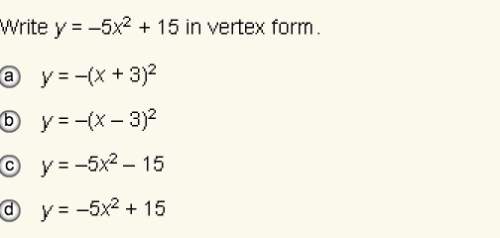
Biology, 04.04.2020 22:07 shorty178658
Mass extinctions have occurred repeatedly during the course of Earth's history. One of these events occurred at the end of the Cretaceous Period, during which the dinosaurs became extinct. Mammals flourished after the dinosaurs were gone. This led to a variety of genetically diverse species. Why did the mammals suddenly start diverging into different species after the dinosaurs were gone?
Most of the predators were gone and suddenly niches were available so almost all the offspring were likely to survive and reproduce.
Once the dinosaurs were gone, the mammals started having larger numbers of offspring in each litter to fill the empty niches.
The mammals chose to move into the vacant niches the dinosaurs had occupied and change their body shapes to suit these new environments.
Mammals began mutating rapidly once the dinosaurs died out and were able to create new species based on the mutations.

Answers: 1


Other questions on the subject: Biology

Biology, 21.06.2019 15:00, brooklynneramos9956
According to the theory of punctuated equilibrium, at what rate does speciation occur? species change depending on the rate of natural selection. after periods of stasis, new species evolve relatively rapidly. species change slowly and eventually form new species. some species change quickly and others change slowly to balance the overall rate.
Answers: 3

Biology, 21.06.2019 15:00, katelynwest1
Although there are a limited number of amino acids many different types of proteins exist because..
Answers: 1

Biology, 21.06.2019 17:50, alishakira690
Aeukaryotic cell must be from a plant if the cell a) a nucleus b) a nuclear envelope c) cytoplasm d) a cell wall
Answers: 1

Biology, 21.06.2019 23:30, iwantcandy2002
Considering the yellow and green pea color phenotypes studied by gregor mendel: a. what is the biochemical function of the protein that is specified by the gene responsible for the pea color phenotype? (1 point) b. a null allele of a gene is an allele that does not specify (or encode) any of the biochemical function that the gene normally provides (in other words, either no protein at all or only non-functional protein is produced from it). of the two alleles, y and y, which is more likely to be a null allele? (1 point) c. in terms of the underlying biochemistry, why is the y allele dominant to the y allele? (2 points) d. why are peas that are yy homozygotes green? (1 point) e. the amount of protein produced from a gene is roughly proportional to the number of functional copies of the gene carried by a cell or individual. what do the phenotypes of yy homozygotes, yy heterozygotes, and yy homozygotes tell us about the amount of sgr enzyme needed to produce a yellow color? explain your reasoning. (2 points)
Answers: 1
You know the right answer?
Mass extinctions have occurred repeatedly during the course of Earth's history. One of these events...
Questions in other subjects:










Business, 25.06.2019 09:50




